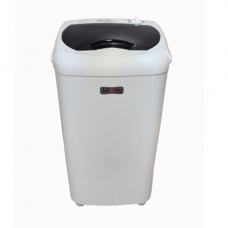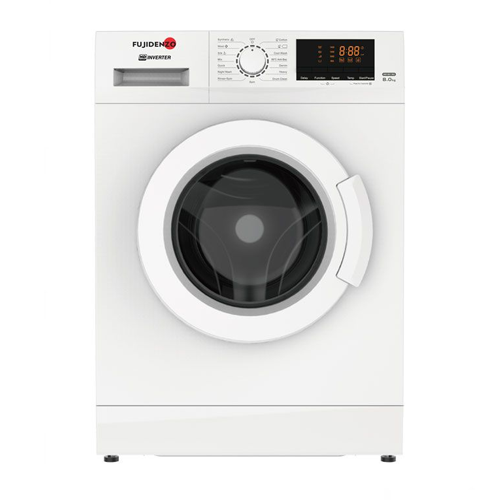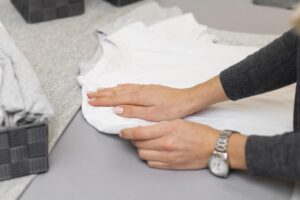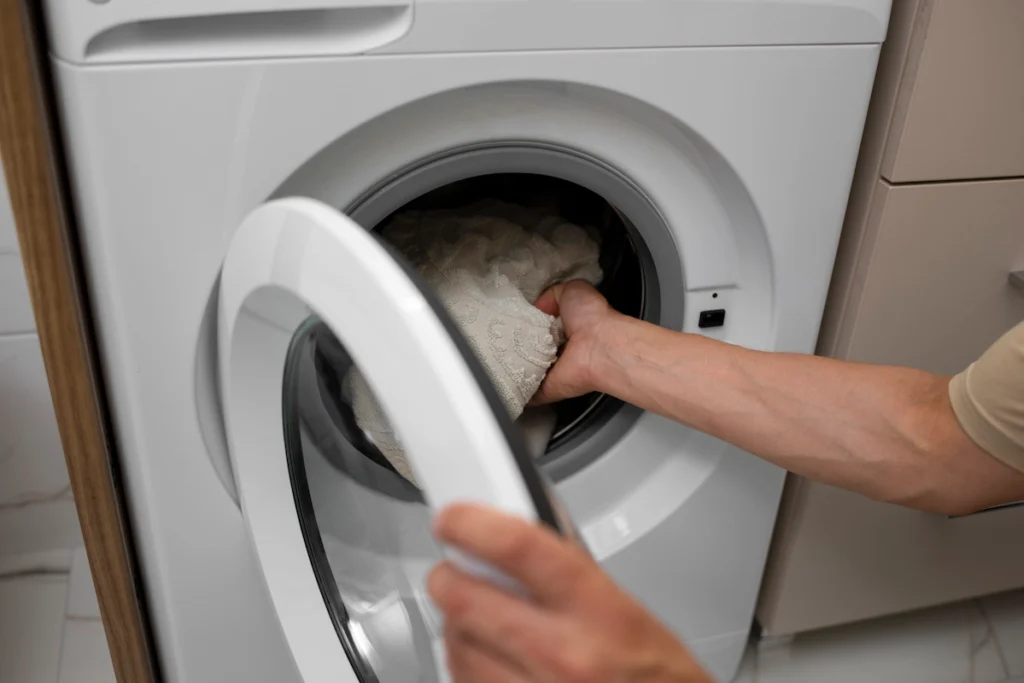
7 Tips on How to Load Your Washing Machine Properly
With the hustle and bustle of modern life, being able to do your household chores efficiently has become a necessity. A washing machine, a mainstay in most homes, can transform a mountain of dirty clothes into a manageable task. This is especially true if you have enough to invest in a washing machine with dryer, which can make things even more convenient for the household.
However, knowing how to load your washing machine properly is vital to ensuring your clothes come out clean, undamaged, and that your machine remains in good working order. To help you out, here are seven of the most important loading tips for maximizing your washing machine.
Sort Your Laundry
The first rule of efficient washing is to sort your clothes. This isn’t just about separating light-colored items from dark ones to prevent color bleeding, which could turn that crisp white shirt into an unappealing shade of gray. Sorting your clothes is also about fabric types—delicate fabrics like silk and wool can shrink or be damaged in fast while hot cycles are meant for sturdy cotton or hard-wearing denim. Separate these items and wash them on appropriate cycles. Similarly, heavily soiled items—workwear with dirt stains or children’s clothes with food spills—should be washed separately. This will prevent dirt from spreading onto cleaner clothes during the wash.
Don’t Overload
While it can be tempting to cram as many clothes as possible into your machine, especially when faced with a hefty laundry pile, overloading has its drawbacks. Clothes crammed into the drum can’t move freely, which is essential for effective washing. Dirt and stains might not be thoroughly removed, and detergent may not fully rinse out, leaving your clothes less than fresh. Worse still, overloading can strain the washing machine’s drum or motor, leading to costly repairs down the line. For optimal operation, leave a gap about the size of your hand between the top of the clothes and the top of the drum.
Underloading Is a No-No Too
The opposite of overloading, underloading your washing machine, is another pitfall to avoid. Running a wash cycle for just a few items can seem quick and easy, especially for that must-wear outfit. But in reality, it wastes water and energy, making it an inefficient choice. Try to gather enough laundry for a full load, or at least a half load. Most modern machines have specific settings for smaller loads, helping you to save water and energy.
Distribute Laundry Evenly
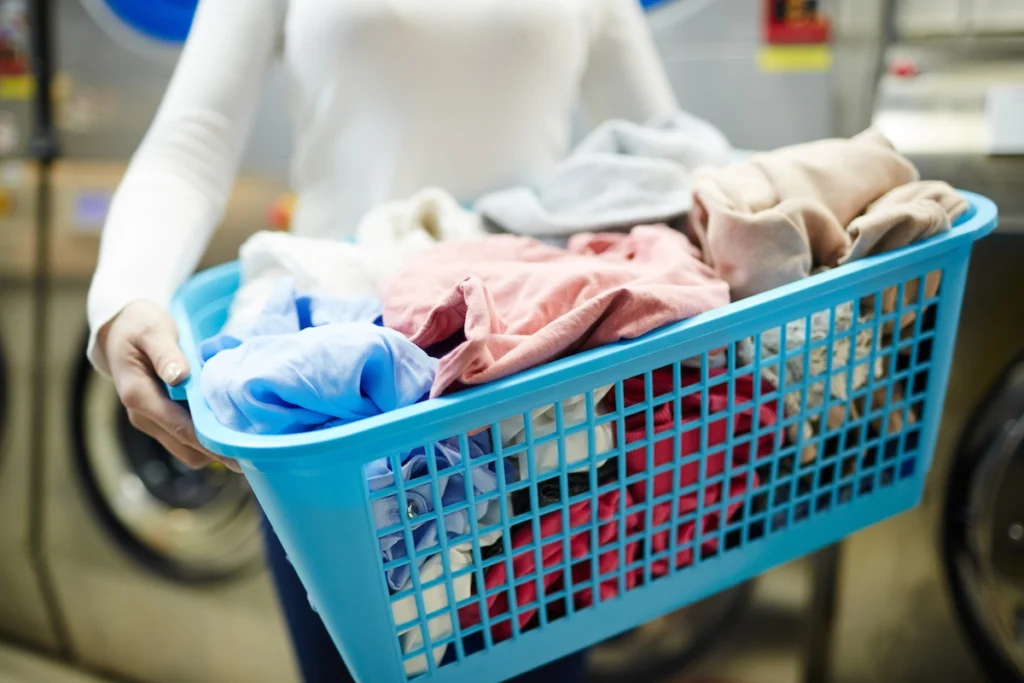
Distributing your clothes evenly around the washing machine’s drum might seem unimportant, but it’s crucial for a balanced wash and spin. An unbalanced load that’s heavy on one side could cause the machine to shake excessively or even displace it from its initial spot. This not only leads to wear and tear on the machine parts but can also cause noise pollution and potential damage to areas near your machine.
Use the Right Amount of Detergent
It’s not always true that using more detergent means cleaner clothes. Indeed, excessive detergent can leave residues on your clothes, leading to skin irritation and dull-looking fabrics. It can also build up in your machine over time, creating a breeding ground for mold and bacteria and leading to maintenance issues. Always refer to the detergent packaging and your machine’s manual for the correct amount. If you live in a hard water area, you might need to add a bit more. However, a standard measure will usually suffice.
Pre-Treat Stains
We all know the frustration of stubborn stains that refuse to disappear. For these kinds of nuisances, you can pre-treat your fabrics before washing them. Apply a small amount of detergent or a specialized stain remover to the stained area. Let it soak in for a few minutes (or longer for very stubborn stains). For tougher stains, gently rub the stain remover into the area using a soft brush or cloth. This pre-treatment process allows the stain remover to penetrate the fibers of the garment and loosen the stain, greatly boosting your chances of completely removing the stain during the wash cycle.
Check Your Pockets
Our pockets often serve as temporary storage for all kinds of items: coins, keys, pens, tissues, and even the occasional snack. While these items may be easily forgotten, they can cause chaos in a washing machine. Coins and keys can damage the drum of the machine, leading to costly repairs, while tissues can disintegrate and clog the machine’s drainage system. Not to mention, pens can leak, causing irreversible stains on your clothes. Before loading clothes into your washing machine, take a moment to check each pocket and remove any items.
In conclusion, loading your washing machine correctly is more than just a time-saving practice. It can also extend the life of your clothes and your machine, while ensuring your laundry comes out clean and fresh every time. By following these seven tips, you can make laundry day a smooth, optimized, eco-friendly process, saving time, resources, and reducing potential stress.
Related Products
- Sold Out16% Off
 [wc-ps tag="span"]Compare
[wc-ps tag="span"]Compare- LOW WATER PRESSURE VALVE
- TOUGH AND DURABLE RUST PROOF BODY
- TEMPERED GLASS LID with LID DAMPER
- AIR DRY FUNCTION
- LARGE LED DISPLAY
- PRESET TIMER
- DUAL FILTER (Lint and Magic Filter)
- MEMORY FUNCTION
- TUB CLEANING
Original price was: ₱21,698.00.₱18,200.00Current price is: ₱18,200.00.Washer Capacity : 9.5KG - Up to Maximum CapacityOther Technology : Non-Inverter - Sold Out6% Off
 [wc-ps tag="span"]Compare
[wc-ps tag="span"]Compare- 9.0 Kg. Spin Capacity
- Big Spin Tub
- Rust and Dent Proof Body
- Plastic Body
- Anti-rat Base
- WDH: 440 x 400 x 800mm
Original price was: ₱5,445.00.₱5,100.00Current price is: ₱5,100.00.Washer Capacity : 8KG - 9KGOther Technology : Non-Inverter - Sold Out13% Off
 [wc-ps tag="span"]Compare
[wc-ps tag="span"]Compare- HD Inverter Technology
- Heavy Duty Quality
- Quick Wash
- Anti-Allergy and Anti-Virus Wash
- Hot Wash up 95 Degree Celsius
- Stainless Steel Drum
- Digital LED Display
- Pump Drain System
- 10 Year Warranty on Motor
Original price was: ₱23,998.00.₱20,900.00Current price is: ₱20,900.00.Washer Capacity : 8KG - 9KGOther Technology : Inverter


